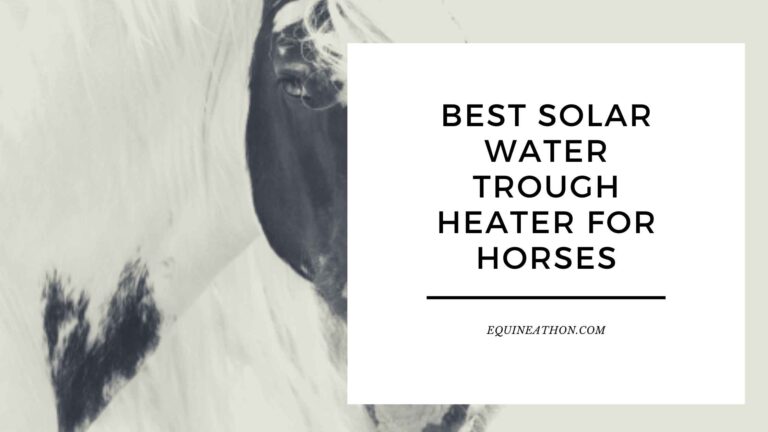Buckskin Horse – The Beauty and Elegance of a Golden Coat
Ever since I first laid eyes on a buckskin horse, I was instantly captivated by its majestic beauty. The rich golden hue of its coat, contrasted with the dark points, is a sight that is both unique and awe-inspiring. But what exactly is a buckskin horse, and what makes it stand out from other breeds and colorations?
A buckskin horse is not a breed but a coat color. It has a tan or gold colored coat with black points (mane, tail, and lower legs). Often confused with dun horses, buckskins lack the dorsal stripe characteristic of duns. This coloration is a result of specific genetic factors and can appear in various breeds.
History and Origin
The history of buckskin horses is intertwined with many cultures around the world. Native American tribes revered the buckskin for its distinct color and often associated it with legends and myths. Later, the settlers and pioneers of the American West highly prized these horses for their resilience and adaptability.
Genetics Behind the Coat
The buckskin color is a result of the cream dilution gene acting on a bay horse. This gene dilutes the reddish-brown coat of a bay horse to a golden hue while leaving the black points untouched. It’s fascinating how genetics play such a pivotal role in creating this mesmerizing color.
Buckskin Across Breeds
One of the intriguing aspects of the buckskin coloration is that it can appear in many horse breeds.
From the American Quarter Horse to the Andalusian and the Norwegian Fjord, the golden hue has made its presence felt. The versatility of this color pattern showcases the widespread genetic influence of the cream dilution gene.
Characteristics and Care
While the primary distinction of buckskin horses is their coat color, many horse enthusiasts believe that they often possess a robust and hardy constitution.
Caring for a buckskin doesn’t differ much from other horses. Regular grooming will keep their golden coat shining, and it’s always a joy to watch the sunlight reflect off their glossy hide.
Conclusion
The buckskin horse, with its golden coat and dark points, stands as a testament to nature’s beauty and the intricate dance of genetics. Whether you’re a horse lover, an equestrian, or someone who appreciates the finer things in life, the sight of a buckskin horse galloping with the sun reflecting off its coat is nothing short of poetic.
Their unique color, combined with their storied history, ensures that buckskins will remain treasured members of the equine world.
ALSO SEE: Who Used Lassos, Lariats, Steel Spurs, and Saddles?
FAQs on Buckskin Horses
- What is a buckskin horse? A buckskin horse is characterized by its tan or gold-colored coat with black points, including its mane, tail, and lower legs.
- Is a buckskin a breed? No, buckskin refers to a coat color, not a breed.
- Are buckskin and dun horses the same? No, they are often confused, but buckskins lack the dorsal stripe that duns have.
- What causes the buckskin color? The buckskin color arises due to the cream dilution gene acting on a bay horse.
- Can multiple horse breeds have buckskin coloration? Yes, the buckskin color can appear in many horse breeds, from the American Quarter Horse to the Andalusian.
- What’s the history of the buckskin horse? Buckskin horses have ties to Native American tribes and were later favored by settlers and pioneers of the American West.
- Do buckskin horses have any cultural significance? Yes, Native American tribes revered them and associated them with various legends and myths.
- How does genetics influence the buckskin color? The cream dilution gene dilutes the reddish-brown coat of a bay horse, leading to the golden hue characteristic of buckskins.
- Is there any special care required for buckskin horses? Caring for a buckskin is similar to other horses. Regular grooming can maintain their shiny coat.
- Do buckskin horses possess any specific traits beyond their color? While primarily known for their color, many believe buckskins often have a robust and hardy constitution.
- What’s the difference between a bay and a buckskin horse? A bay horse has a reddish-brown coat, while a buckskin’s coat is diluted to a golden hue due to genetics.
- How can I identify a buckskin horse? Look for a tan or gold-colored coat with black points, without a dorsal stripe.
- Do buckskin horses appear in equestrian events? Yes, buckskin horses can be found in various equestrian events, just like other coat colors.
- Is the buckskin color common? The buckskin color is widespread, appearing in numerous horse breeds globally.
- How do you maintain the coat of a buckskin horse? Regular grooming will help maintain the gloss and health of their coat.
- Why are buckskin horses so revered? Beyond their unique coloration, buckskin horses are associated with resilience, adaptability, and historical significance.
- Can buckskin color appear in breeds other than the American Quarter Horse? Yes, from the Andalusian to the Norwegian Fjord, many breeds can showcase the buckskin coloration.
- Does sunlight affect the coat color of buckskin horses? Sunlight can reflect beautifully off their glossy hide, enhancing their golden appearance.
- Are there any myths associated with buckskin horses? Native American tribes have associated various legends and myths with the buckskin horse.
- Is the buckskin color only limited to the United States? No, the buckskin color is a result of genetics and can appear in horse breeds worldwide.
- Do buckskin horses have a specific temperament? Temperament is more related to breed and individual personality rather than coat color.
- Are buckskin horses expensive? The price of a horse depends on various factors, including breed, training, and lineage, not just color.
- How did the pioneers of the American West view buckskin horses? Pioneers highly prized these horses for their resilience and adaptability.
- Are buckskin horses good for beginners? Suitability for beginners depends on the horse’s individual temperament and training, not just its color.
- Do buckskin horses need sun protection? Like all horses, it’s essential to provide adequate shade and consider sun protection in intense sunlight.
- How does the cream dilution gene work? This gene dilutes the reddish-brown coat of a bay horse, giving it a golden hue.
- Are there health issues specific to buckskin horses? There are no health issues unique to buckskin coloration. Health concerns are typically breed or individual-specific.
- How can I ensure my buckskin horse maintains its vibrant color? Regular grooming and proper nutrition will help maintain their coat’s health and vibrancy.
- Do buckskin foals have the same color as adults? Foals may have a slightly different hue, which can change as they mature.
- Is the buckskin color rare? While unique, the buckskin color isn’t necessarily rare as it appears in various breeds.
- Do buckskin mares have any breeding advantages? The breeding advantage would depend on genetics and individual traits, not solely on coat color.
- Can two non-buckskin horses produce a buckskin foal? It’s possible, depending on the presence of the cream dilution gene in their lineage.
- Are there different shades of buckskin? Yes, the shade can range from pale cream to a rich gold, depending on genetic factors.
- Do buckskin horses perform well in competitive events? Performance is dependent on training and individual capabilities, not just coat color.
- Why do many horse enthusiasts love buckskin horses? Their unique color, combined with their storied history and hardy constitution, makes them favored by many.
- What’s the connection between buckskin horses and poetry? The sight of a buckskin horse galloping with sunlight reflecting off its coat is often described as poetic.
- Can buckskin coloration fade with age? While some horses’ coats may fade or change with age, it’s not specific to buckskins.
- Is the buckskin horse’s coat shiny naturally? Yes, with proper care and nutrition, buckskin horses can have a naturally glossy coat.
- How does the buckskin color compare to other horse colors in popularity? Buckskin is a well-loved color, but popularity can vary depending on regional preferences and breed standards.
- What’s the primary attraction of the buckskin color? Its golden hue contrasted with black points offers a stunning visual that stands out in the equine world.

